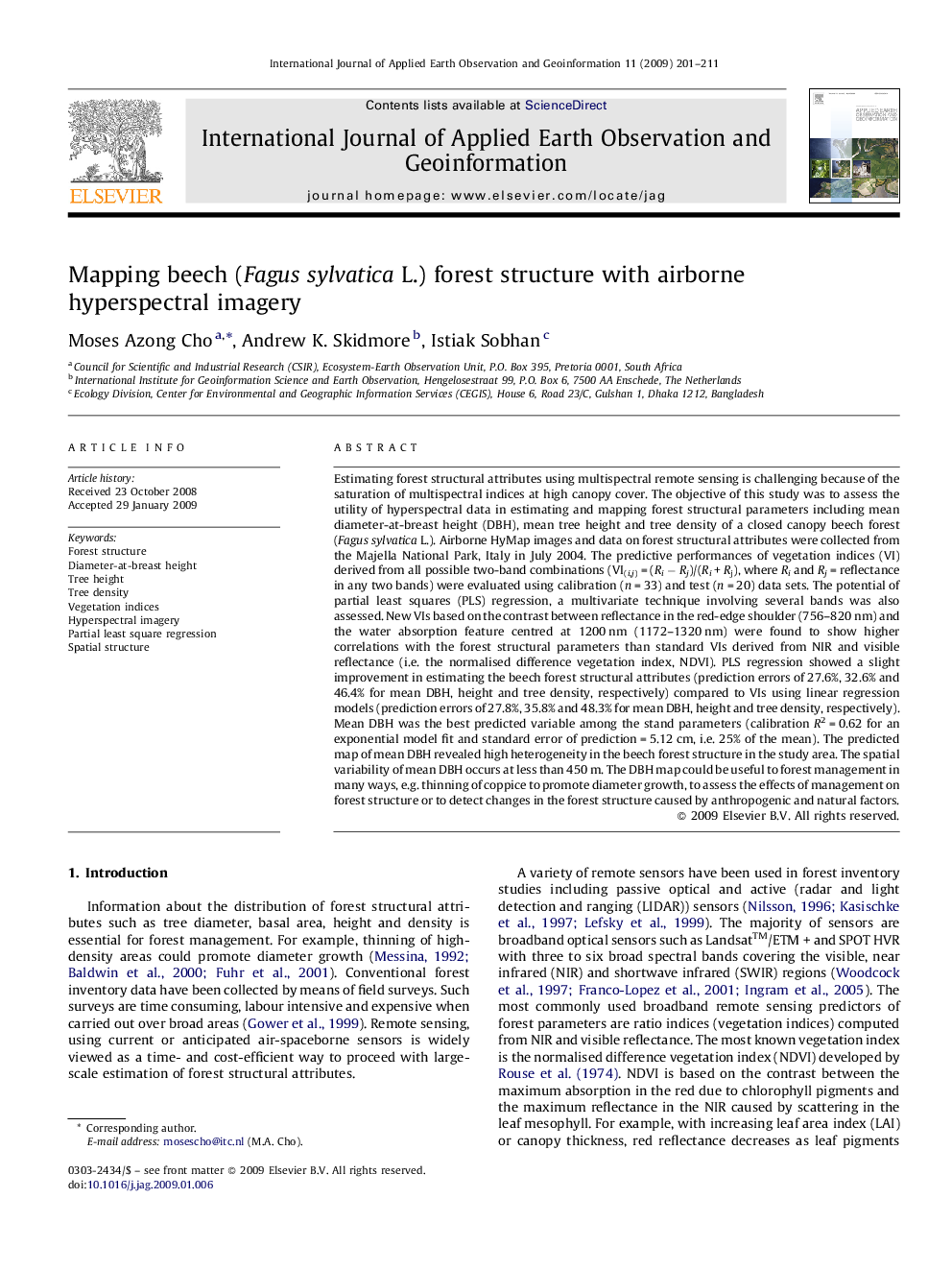| کد مقاله | کد نشریه | سال انتشار | مقاله انگلیسی | نسخه تمام متن |
|---|---|---|---|---|
| 4465288 | 1621864 | 2009 | 11 صفحه PDF | دانلود رایگان |

Estimating forest structural attributes using multispectral remote sensing is challenging because of the saturation of multispectral indices at high canopy cover. The objective of this study was to assess the utility of hyperspectral data in estimating and mapping forest structural parameters including mean diameter-at-breast height (DBH), mean tree height and tree density of a closed canopy beech forest (Fagus sylvatica L.). Airborne HyMap images and data on forest structural attributes were collected from the Majella National Park, Italy in July 2004. The predictive performances of vegetation indices (VI) derived from all possible two-band combinations (VI(i,j) = (Ri − Rj)/(Ri + Rj), where Ri and Rj = reflectance in any two bands) were evaluated using calibration (n = 33) and test (n = 20) data sets. The potential of partial least squares (PLS) regression, a multivariate technique involving several bands was also assessed. New VIs based on the contrast between reflectance in the red-edge shoulder (756–820 nm) and the water absorption feature centred at 1200 nm (1172–1320 nm) were found to show higher correlations with the forest structural parameters than standard VIs derived from NIR and visible reflectance (i.e. the normalised difference vegetation index, NDVI). PLS regression showed a slight improvement in estimating the beech forest structural attributes (prediction errors of 27.6%, 32.6% and 46.4% for mean DBH, height and tree density, respectively) compared to VIs using linear regression models (prediction errors of 27.8%, 35.8% and 48.3% for mean DBH, height and tree density, respectively). Mean DBH was the best predicted variable among the stand parameters (calibration R2 = 0.62 for an exponential model fit and standard error of prediction = 5.12 cm, i.e. 25% of the mean). The predicted map of mean DBH revealed high heterogeneity in the beech forest structure in the study area. The spatial variability of mean DBH occurs at less than 450 m. The DBH map could be useful to forest management in many ways, e.g. thinning of coppice to promote diameter growth, to assess the effects of management on forest structure or to detect changes in the forest structure caused by anthropogenic and natural factors.
Journal: International Journal of Applied Earth Observation and Geoinformation - Volume 11, Issue 3, June 2009, Pages 201–211